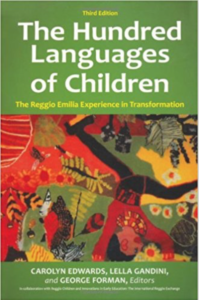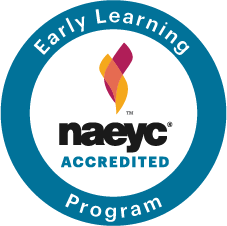Our first parents’ coffee of the school year highlighted the role of the studio and our alterieristas work as guides to the children and as resources to the classroom environments.
Our Journey
- At PIFS – Our journey began with a belief that children learn best when they are actively engaged in exploration – with each other, the teachers and their surroundings. Outdoor play and nature and science exploration was and continues to be at our core – starting with our first Head of School – Fred Wierdsma – and carried forward lovingly by his son Chace.
- We recognize the vital role of the child at the center – and our belief that children construct knowledge – which is in keeping with leaders in the field of John Dewey and Vygotsky – we became drawn to approaches that would align with these beliefs.
- What is great about being a stand-alone private institution, through our research and experience, we can take the best of approaches. At PIFS, for example, we apply concepts from Montessori such as the importance of developing independence and self-reliance; and the strategic method of creating classroom rules and routines in keeping with Responsive Classroom.
The Reggio Approach
- The Reggio Approach was brought to PIFS more than 15 years ago by our second Head of School, Marianne. Rather than filling children with information in a teacher directed, top-down model, Marianne encouraged teachers to facilitate learning about the world around them and representing their learning in a myriad of ways – including speaking, drawing, painting, sculpting, music, and dramatic play – which those familiar with the Reggio Emilia approach known as Loris Malaguzzi’s Hundred Languages of Children.

The Reggio Approach has some key elements that we work to incorporate into our school environments:
- The image of the child as competent and capable
- That symbolic representation by the children enhances their learning, cognitively, socially and creatively using a wide variety of materials, vehicles, and tools
- Learning is social and collaborative
- It is best nurtured with the allowance and freedom of time
- The teacher, parents and caregivers as active participants and guides in this journey
- A purposely created environment as our curriculum:
“Through conscious use of space, color, natural light, attractive and appropriate learning materials and documentation of children’s work, the environment serves as another teacher and is inviting to children, teachers, families, and visitors.”
(Putnam Indian Field School Curriculum, 2017)

Reggio artists at work in the studio
From Veronica Lamendola & Ximena Soto:
Art is the medium by which the educators in Reggio Emilia encourage the children to communicate. It is the medium by which teachers “listen” to the children.
We like to keep 5 things in mind:
- Children use A Hundred Languages to express themselves – words, symbols, sounds, music, art, etc. It is through those languages we learn about our children and what is important to them.
- Children learn through interacting with their peers (social constructivism).
- The environment is the third teacher: The teacher, parent and classroom are all teachers in a Reggio environment. The atelier, or art studio, plays an especially important role in enhancing and guiding the community.
- Children are capable people who can drive their own learning.
- Documentation acts a reflective learning tool to guide teachers and students.
The Studio
It is a room where students come to create, explore and experience themselves through art. It is a beautiful space brimming with natural light, creativity and curiosity. Students are invited to come to the studio on their designated days; some will choose to go immediately, some may hesitate – and that’s ok. For those students who don’t often choose to go, we find ways to encourage them, even if it’s just for a few minutes. Most students, however, yearn to visit the art studio.
Not everything goes as planned in the art studio. Part of being a Reggio teacher is to be not only comfortable with, but welcoming of unexpected directions and distractions that benefit the group or individual. A Reggio inspired art studio is about listening, patience, and caring about children and what they have to offer. It’s not about reinventing the wheel or telling anyone what to do.
The Set-Up
There are three ongoing stations created almost daily. One is for working with paint; another is for observational drawing; the third is for some sort of collage work or sculpture. Making the set-ups beautiful and inviting encourage the children to create.
Documentation
We have a filing system of art portfolios and individual picture files in Drop Box. During our annual Art Show we display selected pieces by each child. Allowing the children to be part of the decision in choosing their pieces reinforces what we believe in: Process over product.


